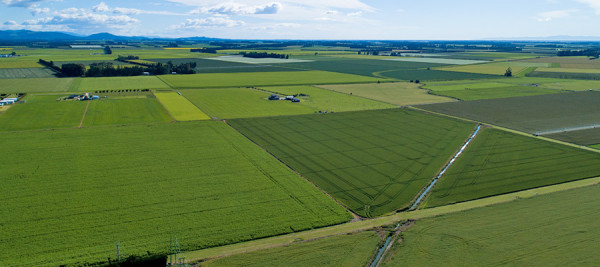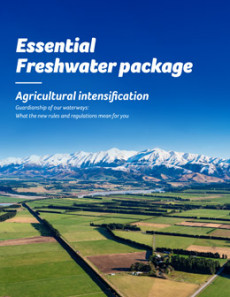Agricultural intensification
Agricultural intensification can lead to higher levels of nutrients, sediment and microbial contamination in our rivers, lakes, wetlands and groundwater.
The Essential Freshwater package aims to limit this contamination by requiring resource consent for various land use conversions over 10 hectares.
If you want to intensify your farming operation, you need to consider the rules under the National Environmental Standards for Freshwater (NES-F) as well as those in the Canterbury Land and Water Regional Plan (LWRP).
There may also be specific rules for some zones that you will need to know.
If you have an existing Farming Land Use Consent, you must still comply with the Essential Freshwater regulations outlined below. Contact your zone’s land management advisor if you have any questions or would like to discuss your options.

Agricultural intensification regulations
If you’re converting more than 10 hectares of plantation forestry to pastoral land use you will require resource consent.
Any conversion or intensification that happened before 3 September 2020 does not need a resource consent under the NES-F.
Any increase in the amount of land used for dairy support, above the maximum that was used between 1 July 2014 – 30 June 2019, requires resource consent.
For example, if the maximum amount of land used for dairy support at any time between I July 2014 – 30 June 2019 was 30 ha, any use of land over 30 ha requires resource consent. Any conversion or intensification that happened before 3 September 2020, 30 ha or less does not need a resource consent under the NES-F.
If you’re converting more than 10 hectares (ha) of farmland to dairy farmland use you will require resource consent.
If you’re converting more than 10 hectares (ha) of non-irrigated dairy farmland to irrigated dairy farmland use, you will require resource consent.
If you're increasing the area of land used for intensive winter grazing above the greatest area used (at any one time) between 1 July 2014 - 30 June 2019, you will require resource consent.
Find out more about intensive winter grazing regulations under the Essential Freshwater package.
Please note that comprehensive information is required for a resource consent application and we recommend you contact us to arrange a free pre-application meeting with a Consent Planner.
Need help?
If you have any questions about agricultural intensification, please contact your local Land Management Advisor.
More information
Pastoral land use
Pastoral land use is the use of land for the grazing of livestock.
Plantation forestry
Plantation forestry or plantation forest is a forest deliberately established for commercial purposes that is at least 1ha of continuous forest cover of forest species that has been planted, and has or will be harvested or replanted, and includes all associated forestry infrastructure.
It doesn’t include:
- a shelter belt of forest species, where the tree crown cover has, or is likely to have, an average width of less than 30m
- forest species in urban areas
- nurseries and seed orchards
- trees grown for fruit or nuts
- long-term ecological restoration planting of forest species
- willows and poplars space planted for soil conservation purposes.
Dairy support land
Dairy support land is land on a farm that is used for grazing dairy support cattle.
Dairy support cattle
Dairy support cattle are cattle that are farmed for producing milk, but are not being milked (for example, because they are heifers or have been dried off) and are grazed on land that is not grazed by dairy cattle.
Dairy farm land
Dairy farm land means land on a farm that is used for grazing dairy cattle.
Dairy cattle
Dairy cattle are cattle farmed for producing milk and includes:
- any bull on the farm whose purpose is mating with those cattle
- unweaned calves of those cattle.
It does not include dairy support cattle.

